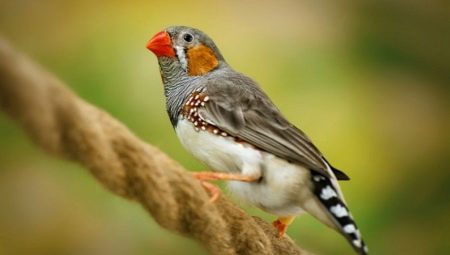Among poultry, amadins are becoming increasingly popular. These birds have a spectacular appearance, a pleasant voice, beautiful plumage. In leaving, they are not too demanding, although they can be shy. Cheerful Amadins will certainly bring diversity to your life.
Features
Birds belong to the weaver family, where there is a rich species diversity. At home, Japanese amadins are most often bred - they are not capricious in leaving, although they are as concise as possible. Zebra birds, more energetic and active, are also very popular. Less commonly, houses contain amadins:
- red-faced;
- diamond
- parrots.
In general, you need to keep and care for all types of amadins in approximately the same way.
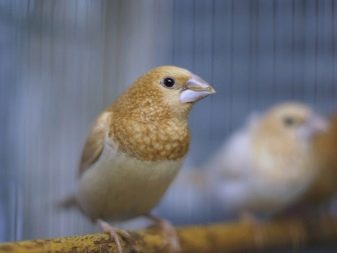
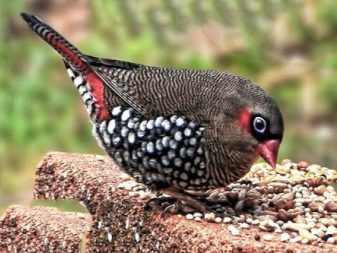
Cell selection and filling
It is necessary to maintain and care for the amadins correctly so that the birds reproduce, develop and do not hurt. The location of the content largely depends on the capabilities of the owner. It can be a cage or an aviary, the main thing is to properly equip the housing of birds. Most often, birds live in cages in the apartment, this type of placement is compact and does not take up much space, in addition, cleaning the cage is much easier. First of all, pay attention to the material of manufacture. Cells are made of metal, wood or combined.
Characteristics:
- metal cage rather strong, the light enters well, the service life is long, a big plus of metal in hygiene, ease of care, but they are quite noisy, all the feathered jumps are heard by households;
- wooden cage aesthetic, beautiful, in it birds are less audible during movements, but this species is not too hygienic, less durable compared to metal, in addition, they require more reverent care;
- combined models combine the advantages and disadvantages of both varieties.
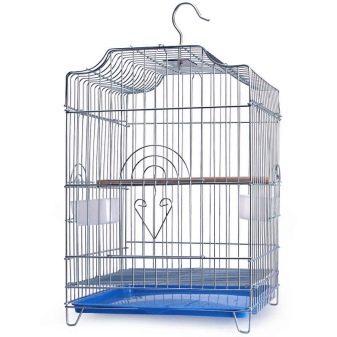
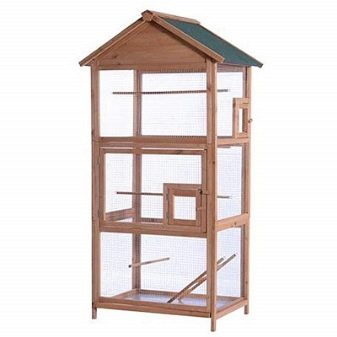
An important point: not every material for metal cages is suitable for birds. Buy aluminum and steel models, but abandon copper ones. In the process of oxidation, copper releases harmful substances, this can lead to poisoning of birds. You should also pay attention to the shape of the cell, its size:
- the norm of space for one pair is a length of more than 45 cm and a height of more than 25 cm;
- when birds breed, it is necessary to provide them with 2 times more space than usual;
- the shape of the rectangle is more comfortable for birds to stay, for cleaning in a cage;
- abandon the dome-shaped models, there will not be visible amadins;
- the round shape disorientates this rock in space;
- refuse cells with excess decor: balconies, turrets, otherwise you will often have to wash them from accumulations of dirt.
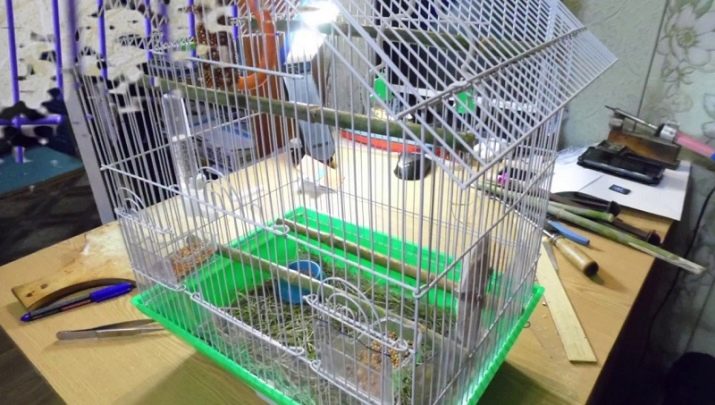
Cell construction is another nuance that requires careful attention:
- a removable tray will make cleaning easier;
- a small door below the perches allows you to clean and put food and drink without the risk of a bird flying out.
For the quality development and comfortable stay of birds in cages and cages, it is necessary to properly equip them. You will need:
- one grain mixer feeder;
- feeders for additional types of food;
- drinker;
- place for mineral top dressing;
- two or more poles;
- bathtub for bathing;
- nesting place if breeding is planned;
- attributes for cleaning the cage: scoops, brooms, brushes, rags.
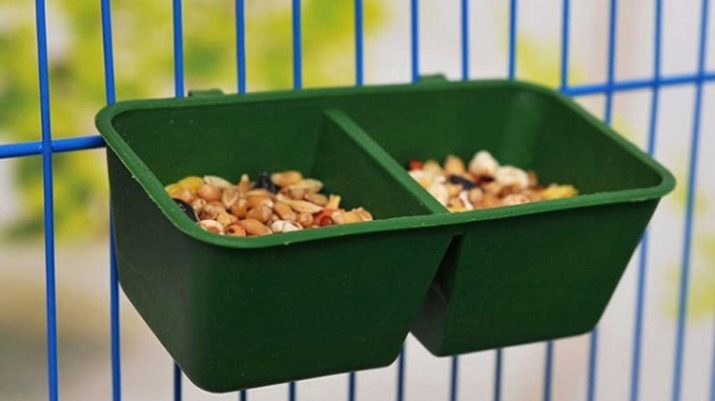
There are a number of requirements for containers for drinking and feed, which should be taken into account:
- plastic, glass or porcelain are preferred; they are hygienic enough and easy to wash;
- discard wood products, copper;
- it is better to place containers on the wall of the cage or floor, not under the perches, otherwise the stool will get there;
- The drinker and feeder are located in different areas of the cage.
The poles are preferred made of wood, the size is selected according to the circumference of the paws, otherwise the amadina will be uncomfortable to sit. The optimal number of poles is at least 2, they are not installed very close to each other, then the birds will fly. When installing the perch, note that with the tail the bird should not touch the walls of the cage. The bottom of the cage or the floor of the aviary is lined with the following materials:
- wood shavings;
- sawdust;
- river sand;
- pieces of paper.
Only after everything is equipped for comfortable life and development of birds can birds be launched.
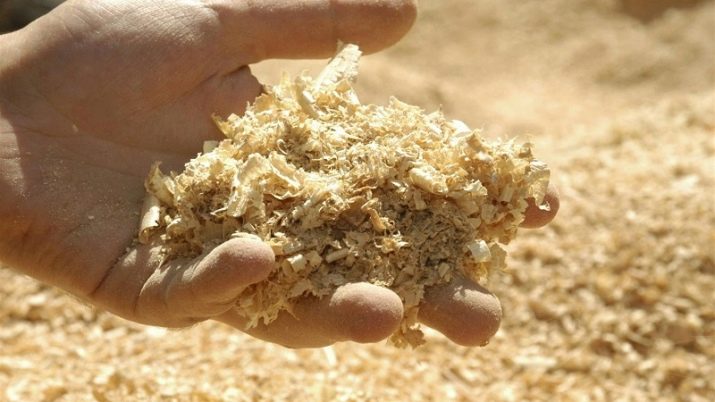
Content temperature
Amadins are exotic species of birds, so there are many features of the content in the house, although usually the birds of this breed are not too capricious. Primarily it is necessary to choose the location of the cell.
This largely depends on the species of birds. The Japanese are calmer, they can be put at any height from the floor, they are not afraid of the approach of a person. Zebras are more disturbing, the optimal place for installing the cage is a cabinet, shelves at a height.
It is very important that the birds are in a well-lit area, hidden from drafts. If the house is heated by a stove, fireplace, cells can not be placed and hung under the ceiling, they can burn.
Do not place birds in the immediate vicinity of heating appliances. As for air temperature and humidity level, stability is important here first of all.
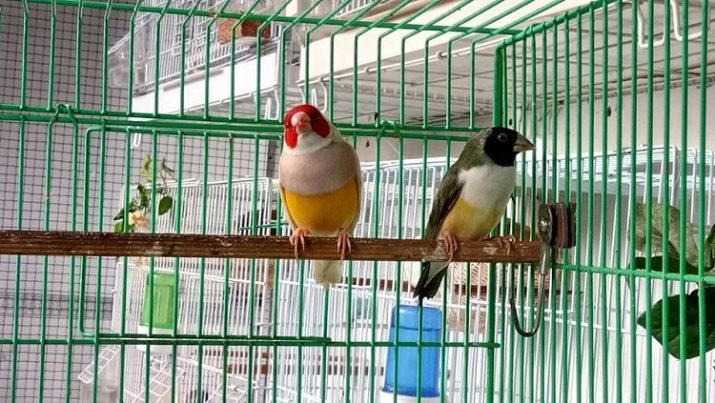
Features of the content:
- ideal temperature fluctuation range from 15 to 24 C;
- overheating and hypothermia are equally harmful for amadins, and the latter are easier to tolerate;
- a temperature of more than 25 ° C for several days will lead to a deterioration in the condition of birds;
- if the temperature is below normal, it is necessary to increase nutrition, so the bird will easily endure discomfort;
- average moisture level is optimal for the development of this breed;
- care must be taken that the fluctuations are not too sharp, especially towards lowering the temperature.
It is very important to provide competent lighting. This factor also affects development and health, like temperature and humidity. Daylight hours vary ideally from 12 to 15 hours. Birds need direct rays, so in the warmer months they should be outdoors for about 40 minutes a day. If you do not follow these recommendations, birds may get sick. In winter, you should not increase the length of daylight too much, this can lead to fatigue, lethargic behavior.
In order to provide birds with the required degree of light, incandescent lamps, artificial light should be used. To avoid overheating, they should not be brought closer to the cell closer than 1.5 meters.
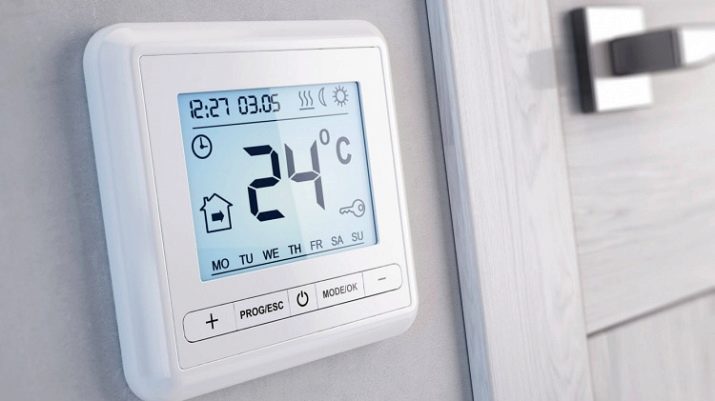
How to feed the birds?
The development and health of amadins at home is directly dependent on the quality and balance of nutrition. It is necessary to feed the birds in a variety of ways, to maintain a balance, to ensure a complete complex. There are several varieties of feed:
- grain mixtures - form the basis of the diet;
- feed of plant origin;
- soft, protein feed;
- supplements of vitamin and mineral types.
The main part of the diet is grain mixtures, which are composed of different types of millet, oatmeal, and plant seeds. This type of feed must be poured every morning. The quantitative norm is calculated individually, since all birds have different appetites. The average varies 1 to 1.5 teaspoons per adult bird.

About once every 7 days, birds are fed with additional types of feed, for example, soft. It consists of boiled eggs, cottage cheese, combined with grain. It must be remembered that this product is perishable, therefore it cannot be left for a long time and laid out in a container for grain mixtures. Several times a week it is worth giving the birds vegetable feed:
- salad;
- nettles;
- dandelion.
Periodically, you can add protein to the diet, that is, different types of dried insects. As for mineral additives, chalk, shell, sand are most relevant, periodically given mineral mixtures with calcium and phosphorus.
Water changes twice a day, in the heat it should be done more often. In addition, the water tank must be thoroughly washed so that mucus does not appear.
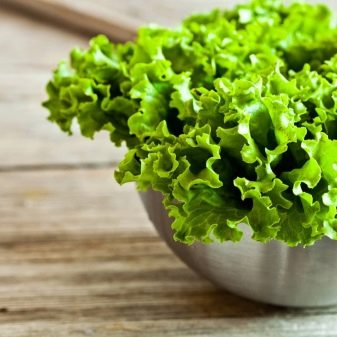

Rules for breeding and caring for chicks
Amadins are able to bear offspring in captivity. Reproduction is a process that requires attention, but not too complicated. You need to know the following rules:
- for successful reproduction, it is necessary to increase the daylight hours to about 16 hours or slightly less;
- you need a separate cage and a house for nesting, it is enough to put a house for the instinct to work, it is better if there are 2 nests;
- the minimum age suitable for breeding is 9 months; the maximum is 5 years;
- the male and the female both should be ready for the process, the male at this time increases activity, singing becomes more frequent, the female tries to equip the house, takes posture of a draft character;
- if you notice that the birds are sorting feathers from each other, then the pair has formed;
- These recommendations are common to all types of amadins.
The preparatory period smoothly passes into the laying and incubation. The instinct is very well developed in females, there are no problems. Moreover, males often help females to hatch. In one clutch, usually from 3 to 6 eggs, but not all of them hatch. So that parents do not peel the shell, during the hatching period, it is necessary to increase the protein and calcium content in the feed.
The hatching period lasts about 2 weeks, then naked and blind chicks appear. They ask to be eaten right away, but the female feeds them well, after the father also starts feeding. After 3 days, the first squeak appears, after a week the eyes open. Then begins the period of active plumage, after about a month the chicks are separated from the nest.
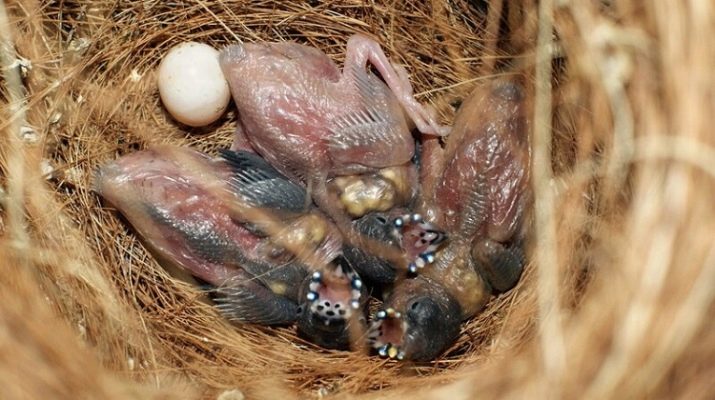
Taming Features
To tame a bird of this breed, you need to work with only one individual - this is the main rule of the train. If you want to tame several birds, you will have to do this in turn. If there are more than one Amadin, they are not able to concentrate, distracted. Train the birds as follows:
- separate the individual from neighbors for the entire term;
- it is worth placing the bird during the training period, you need to in a small cage with a convertible top or wall, otherwise the catch will be inconvenient;
- wings are necessarily cut, otherwise the bird may accidentally fly away from the house, hit, spin in a fan;
- a short period will pass and the feathers will grow back, but contact with the bird will already be established;
- In case of regular release of birds, periodic trimming is necessary on an ongoing basis.
The purpose of taming is to force the pet to sit on hand. Algorithm of actions:
- select a small room;
- close the doors;
- do not make the bird that flies out accidentally immediately return to the cage; pour food on the cage floor;
- it is necessary to carefully make the bird appear in a corner and put his hand so that the bird has no choice but to sit on it;
- show perseverance and be tolerant, this process will take time;
- you need to train the bird every day;
- after the bird jumps on its own and sits on the hand willingly, for a long time, it can be pulled out of the cage, only as slowly as possible;
- give up trying if the bird is afraid;
- after the pet gets used to the arm and can be reached, gradually accustom it to sitting on the shoulder.
As soon as the bird, at your appearance, gives a sign that it wants to get out of the cage, the pet is tamed.
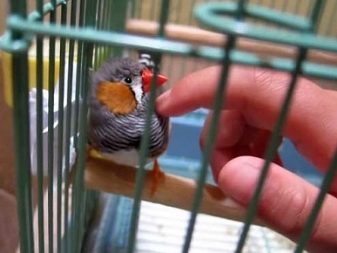

Recommendations
Amadins are a fairly sociable breed, so it is better not to start one representative. These are flocks of birds, they are bought in pairs. If you do not plan to breed, you can buy not a female and a male, but two males or females. Choose birds older than a year, be sure to evaluate their appearance when buying and follow a number of rules:
- there should be no bald spots, ruffles, ulcers, inflammations;
- plumage is dense, healthy amadine is well-fed, eyes shine;
- energetic, active behavior;
- the voice should not be hoarse;
- transport birds in special small cages;
- after transportation, monthly quarantine must be maintained so as not to plant a sick bird in the flock;
- the best time to purchase is autumn.
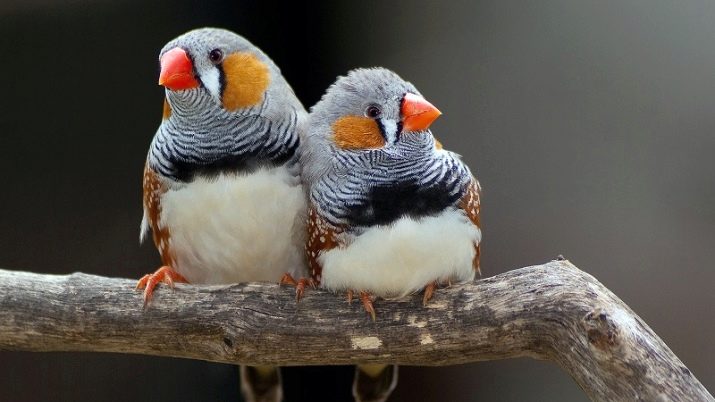
In the next video, you will find more information about keeping and keeping your home amadines at home.
